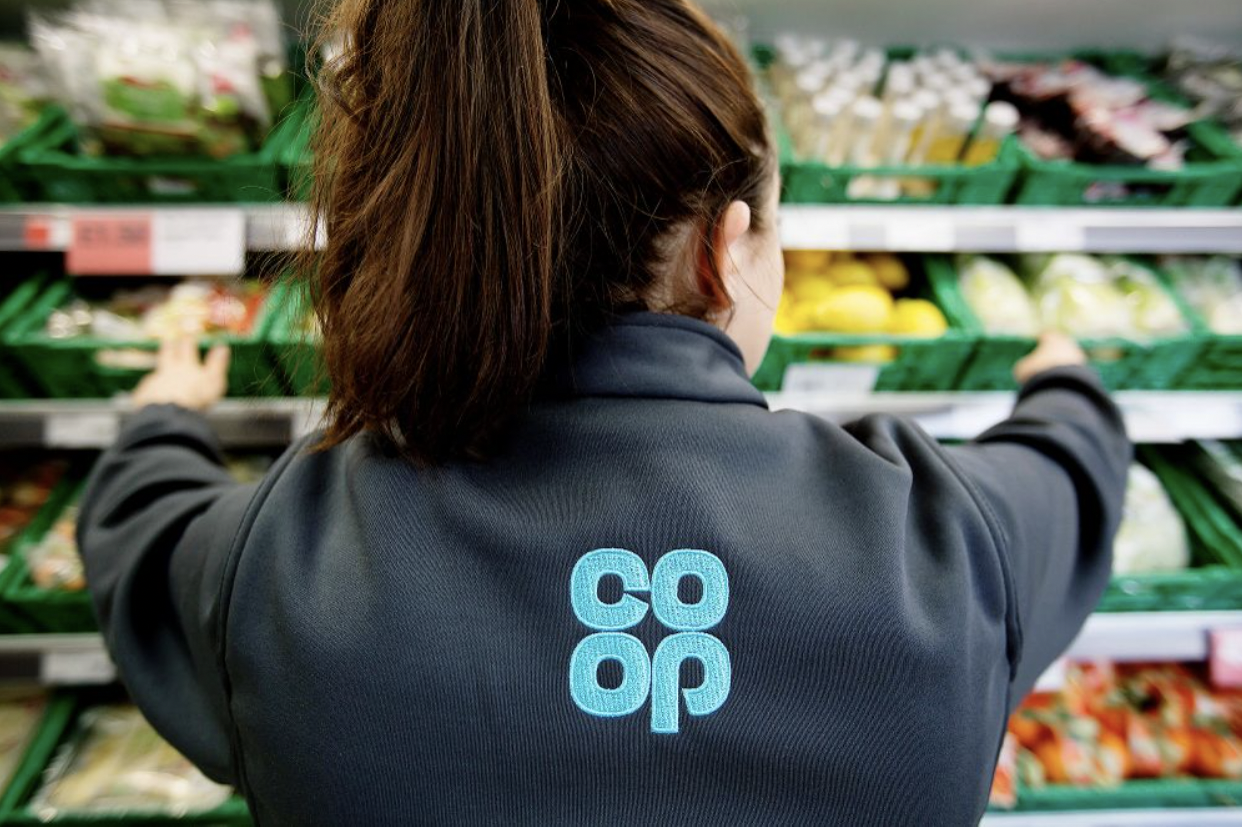
EVAN DAVIS- NOVEMBER 14TH, 2022
EDITOR: ABBY MORRIS
PROJECT LEAD: SAM QUATTROCIOCCHI
Imagine you walk into work one day. At your old job, you’d be greeted by your boss, who would give you some menial task to fill out in a cubicle, while at the same time most likely reprimanding you for being late. Upon completion of a task, you’d get a slap on the back before being given some other unfulfilling assignment. Day after day, this cycle repeats itself. You are a cog in a machine which operates independently of what you truly desire.
Instead, at this new job, you walk into a collective board meeting to vote on the next actions taken by the company. You, the worker, have a say in the direction of your business. You, along with your fellow workers, directly own the company, instead of having to answer to the whims of a corporate hierarchy or wealthy shareholders. This is because you work in a co-op.
Capitalist firms and co-ops are two forms of economic association. Both are voluntary organizations formed of, by, and for the members rather than a state. Both operate within the context of a market economy where economic actors vie for profit by earning voluntary payment from consumers, rather than relying on compulsory funding via state taxation. However, a common critique of capitalist market economies is that workers do not get a say in the production or marketing processes of most businesses, and the resulting hierarchy in executive decision-making exacerbates inequality. This is because the interests and wishes of the workers are not properly considered; they often clash with those of their bosses, who want to give them fewer benefits and lower wages to maximize profit. In this article we will analyze these claims and weigh the potential pros and cons of both co-ops and firms. We will focus on issues such as relative flexibility, relative stability, employment, wages, worker satisfaction, productivity, and profit.
Firms and co-ops have distinct theoretical and empirical advantages relative to one another, trading blows in some metrics while a clear winner emerges in others. As economist Ludwig Lachmann notes, the market economy is “a world of flux in which the ceaseless flow of daily news impinges upon human choice and the making of decisions.” In other words, markets experience change. Consumer desires change; available materials change; economic policies change. One potential advantage of traditional firms, typically run by individuals or smaller groups of people, is that they are generally more flexible and able to adjust to these changes.
The structure of firms is more conducive to rapid policy changes than that of co-ops. Eric Dontigney, a writer for AZCentral, conjectures that “[t]raditional firms, which centralize power into the hands of a comparatively small number of hands, can often respond quickly to abrupt changes in the market or unforeseen internal crises.” Co-ops, on the other hand, with their increased number of voices contributing to decision making, may create more conflict and stall decision-making. Specialized entrepreneurial knowledge or talent held by individuals may be dampened by majority decision-making, further hindering a co-op’s productivity or growth.
Generally speaking, this is a trend: co-ops are less flexible, preferring to adjust wages rather than change the number of workers they employ. An empirical study by Stanford economists found just this, concluding “[c]o-ops had 14% lower wages than capitalist enterprises, on average; more volatile wages; and less volatile employment.” As market conditions change, wages rise and drop more often than employees are hired or fired. As such, co-ops are not a great source of job creation or a good solution to unemployment. This lack of flexibility with regards to employment may further hinder a co-op’s performance, as it’s less likely that they can hire more competent workers or fire the less competent ones. A business which coldly fires an unskilled worker and replaces them with someone more competent may often experience an increase in productivity. In not doing this, a co-op may be more true to the interests of its employees, at the expense of higher customer satisfaction.
Furthermore, the co-op wage system is more of an egalitarian one, where wages are sometimes, although not always, uniform. This less hierarchical and competitive system can drive away the most talented workers, who don’t receive as much compensation as they otherwise could for their superior performances. A study focused on workers in Uruguay found that high-talent workers are more likely to abandon co-ops, notably when labor market conditions related to capitalist firms are good.
These factors give firms a natural advantage when it comes to productivity and turning a profit. A study by economists Olubunmi Faleye, Vikas Mehrota, and Randall Morck concludes that “[co-ops] deviate more from value maximization, invest less in long-term assets, take fewer risks, grow more slowly, create fewer new jobs, and exhibit lower labor and total factor productivity.” In other words, traditional firms are more productive and tend to exhibit higher growth. These results seem to vindicate the theoretical arguments outlined above that co-ops can suffer from an overall lack of flexibility, which hurts their growth rates due to their trend of taking more ‘low risk, low reward’ actions.
However, the case for co-ops is not lost, as they have a set of advantages of their own. For starters, their lack of flexibility means on the flip side that they are more stable. They are much more resilient during recessions. Some economists argue that recessions are economic re-adjustment methods meant to shift labor and capital towards more productive uses. When businesses go under in a recession, they lay off workers and stop utilizing resources. These workers find new jobs and resources are used by new businesses, who survived the recession or formed after it. While co-ops would skirt this re-adjustment, in doing so they’d maintain employment for their workers in times of economic downturn, allowing them to weather recessions much more easily than traditional firms. Indeed, some evidence goes as far as to show that “cooperatives [historically evolved] independently of the business cycle.”
Similarly, as they are more stable, co-ops are more likely than firms to survive once they’re established. While firms may be easier to establish, implied by the fact that more firms are created per year than the total number of existing co-ops. A research report found that co-ops across the world were much more likely to survive their first five years of business, most likely because once established, the ‘low risk, low reward’ behavior typical of most co-ops pays dividends in ensuring their survival.
Evidence comparing co-op worker satisfaction to firm worker satisfaction is somewhat mixed, but tends to favor co-ops. This makes intuitive sense, as cooperatives allow for far greater worker influence over decision-making. Hence, one would expect decisions to align more with worker interests, and greater worker satisfaction to come about as a result. A study by political philosopher and theorist Mark Kaswan found that since the interests of the worker align with those of the business under a co-op model, co-op workers are happier, both theoretically and empirically.
There is also evidence showing co-ops may sometimes be more productive or pay better wages than traditional firms. Empirically, while one report focused on plywood mills in Washington state finds that co-op practices result in “neither major efficiency gains nor efficiency losses” relative to firms, another much broader report finds that co-ops from around the world are more egalitarian, sustainable, stable, profitable, and productive than their firm counterparts, with employees working “better and smarter.” Furthermore, the Spanish study found that in their particular case, co-ops paid their workers better wages than comparable firms. These findings directly challenge some of the earlier evidence in favor of firms.
In conclusion, are co-ops or firms the superior business model? Neither clearly beats the other. A quick way to summarize the evidence would be that firms are more flexible, while co-ops are more stable. Firms are better at satisfying consumer desires, while co-ops are better at serving the interests of their employees. This indicates neither business model should be done away with in favor of the other. Indeed, economists Arando, Gago, Jones, and Kato, conclude that their work shows co-ops are viable and possibly superior to firms, yet do not believe their “findings imply that employee-owned enterprises are a universal panacea.”
While the mixed results indicate it would be a grievous mistake to forcefully mandate co-ops or ban capitalist firms, it is nonetheless clear that co-ops are viable. A cooperative market economy is a way to synthesize increased worker control over the economy with the freedom, competition, and innovative dynamics unique to a market economy. Society can take steps to foster co-op success while also leaving the door open for traditional businesses to thrive alongside them.
Featured Image Source: The ODI
Disclaimer: The views published in this journal are those of the individual authors or speakers and do not necessarily reflect the position or policy of Berkeley Economic Review staff, the Undergraduate Economics Association, the UC Berkeley Economics Department and faculty, or the University of California, Berkeley in general.



